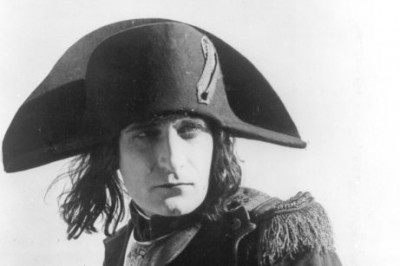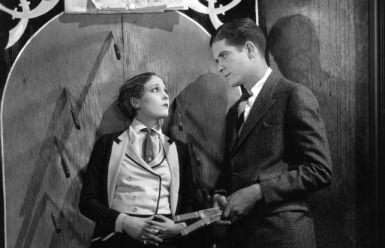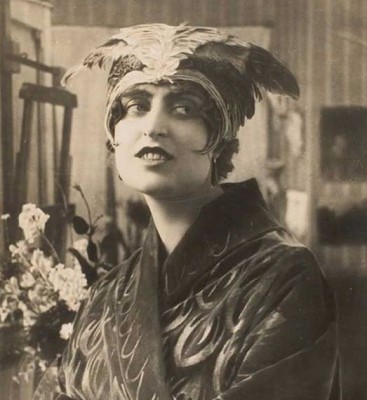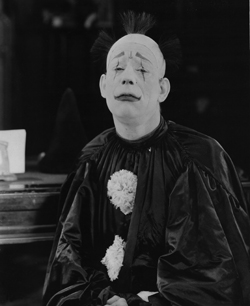
 |
|
| |||||||||||
|
The 16th Annual San Francisco Silent Film Festival
The 16th Annual San Francisco Silent Film
Festival
coverage by John Sinnott The 16th Annual San Francisco Silent Film Festival was held July 14-17 and once again they presented a collection of silent films, both familiar and obscure, that were astounding. Every feature and short was accompanied by live music performed by some of the best silent film musicians from all over the world including the Mont Alto Motion Picture Orchestra, the amazing British pianist Steven Horne, the Swedish Matti Bye Ensemble, organist Dennis James, and many more. It was a fantastic weekend for the film fans that attended.  The big news to come out of the festival this year is that, at long last, Kevin Brownlow's 5 ½ hour long restoration of Able Gance's masterpiece Napoleon will be shown in the United States for the very first time this coming March. There will be four shows only, accompanied by the Oakland East Bay Symphony who will be accompanied by Carl Davis and playing his score. This is big news. There is only one print of this restoration in the world, and it hasn't been screened in seven years due to legal difficulties. These same legal problems are going to keep the film off of DVD and Blu-ray for the foreseeable future, so this is your only chance to view this famous but little-seen film. If that's not enough to get you interested, this screening will also have the 'Polyvision' finale where three synchronized projectors will project three images simultaneously across a triple-width screen. (That's something you won't be able to reproduce on home video!) Tickets are on sale now, and by all accounts they're going fast. You can get them through the Film Festival's web site.  The festival started off with a
'lost' film, an early John
Ford feature Upstream. Recently
discovered in a film archive in The festival started off with a
'lost' film, an early John
Ford feature Upstream. Recently
discovered in a film archive in This light romantic comedy is set at a boarding house for vaudeville performers and centers around a three-piece act that includes a talented knife thrower, an attractive assistant, and the black sheep of a prestigious stage family (obviously a parody of the Barrymores.) While the love triangle that emerges drives the film, the charm is in the supporting characters, a group of mostly down-on-their-luck actors and actresses who dance, tumble, and ham it up for each other. A funny and entertaining film, the conclusion is satisfying but not the type of thing that would ever get made today. A surprising and very satisfying film. The festival screened another film that was long thought to no longer exist: the 1918 Douglas Fairbanks comedy Mr. Fix-it. Directed by Allan Dwan before  One brilliant discovery at the
festival this year was an
Italian Diva film, Il Fuoco. I
had never encountered a 'Diva' film before
and found it wonderfully entrancing.
When a poor artist meets an intriguing poet (Menichelli) while
painting
a sunset, he becomes entranced with the woman.
Going to the same location the next day in the hopes of meeting
her
again, he discovers a note from the lady announcing that she'll come
for him
some evening, and seduce him unless he's strong enough to resist. She gives him fair warning that she plans to
grasp him in her "talons" but he ignores the danger and leaps
head-first into
an intense and fiery romance. One brilliant discovery at the
festival this year was an
Italian Diva film, Il Fuoco. I
had never encountered a 'Diva' film before
and found it wonderfully entrancing.
When a poor artist meets an intriguing poet (Menichelli) while
painting
a sunset, he becomes entranced with the woman.
Going to the same location the next day in the hopes of meeting
her
again, he discovers a note from the lady announcing that she'll come
for him
some evening, and seduce him unless he's strong enough to resist. She gives him fair warning that she plans to
grasp him in her "talons" but he ignores the danger and leaps
head-first into
an intense and fiery romance.
Playing the femme fatal perfectly, Menichelli stalks her prey like the predatory birds she admires full of menace and a sexual attraction. It is a stylized film that's a bit different from any other type of film I've seen. While the story is interesting and strong, the female lead (Pina Menichelli) is dressed in outlandish costumes (including a hat made out of feathers that is supposed to make her look like an owl) and stands in unusual poses. She also oozes sexuality and somehow these disparate elements come together to create a fascinating film. Other highlights include a program of early Disney Laugh-O-Grams, animated shorts he made before moving to LA and creating a mouse that is famous the world over. Made in  Speaking of footwear, the 1932
feature, The Nail in the Boot, was a Soviet-made
propaganda film where the
message really sneaks up on the viewer.
It has a surprising amount of action and suspense, and a n
unexpected
twist at the end that really enhances the film. Speaking of footwear, the 1932
feature, The Nail in the Boot, was a Soviet-made
propaganda film where the
message really sneaks up on the viewer.
It has a surprising amount of action and suspense, and a n
unexpected
twist at the end that really enhances the film.
I could go on and on. There was a wonderful silent Ozu film, a great Maurtiz Stiller film from This was my 7th year attending the festival and it was one of the best ones yet. Anyone who has even a slight interest in early cinema should make a point of trying to attend next year's event. There hasn't been a bad year yet.
Archives
The 5 Most Influential Summer Blockbusters
Los Angeles Comic-Con Cosplay Spotlight Notes from Book Expo DVD Talk Interview: Batman: Return of the Caped Crusaders Compete Archives
Review Staff
| Newsletter Subscribe
| Join DVD Talk Forum
|
| |||||||||
| |||||||||||